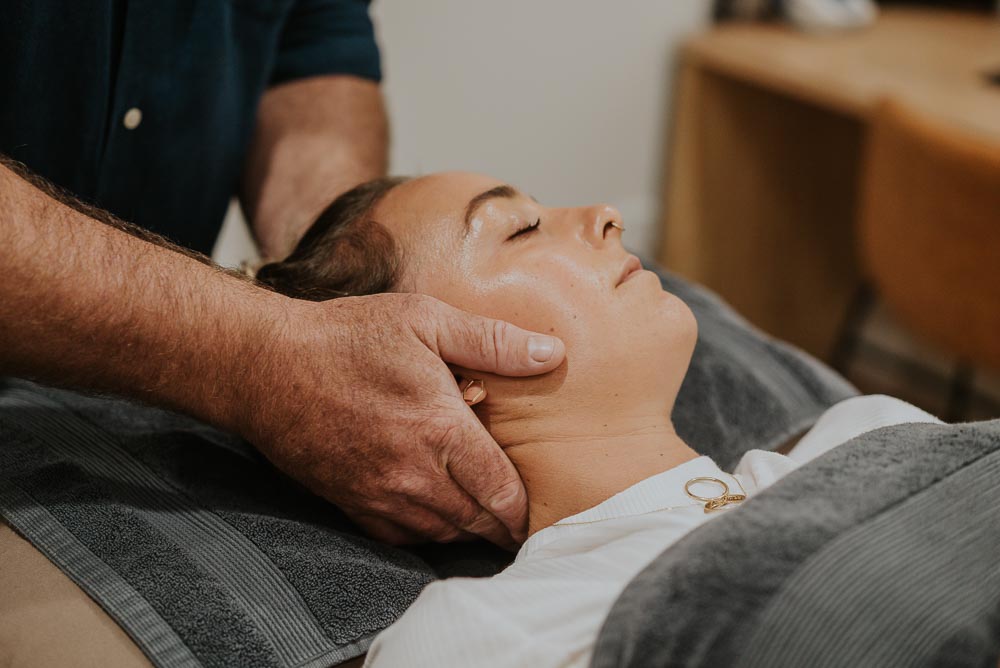
What do osteopaths do?
In Australia, osteopaths are government registered allied health practitioners who complete university training in anatomy, physiology, pathology, general healthcare diagnosis, and osteopathic techniques.
Osteopaths focus on your neuro-musculoskeletal system - the bones, muscles, nerves and other tissues that support your body and control its movements. They know how parts of your body should work together and the impact if they do not.
Osteopaths are trained to provide:
- Musculoskeletal and nervous system assessments – they use a range of tools to identify what might be happening in the body.
- Manual therapy –includes a range of ‘hands-on’ techniques that may give relief from musculoskeletal pain, discomfort and may help tissues in the body.
- Clinical exercise programs – activities and movement strategies for use at home, work or in other settings. Exercise may help you return to activities you enjoy, for example after an injury or surgery.
- Movement, postural, positioning advice and ergonomic assessments.
- Therapeutic needling techniques, like dry needling, or trigger point therapy.
- Advice about your lifestyle, stress management, diet or other factors that may influence your pain, injury or movement.
Your First Consultation
Arrive early
It is advisable to arrive a little early for your first appointment, you may need to fill out some paperwork.
You will be asked to sign a general consent form, but you will have the opportunity to consider and consent (or not) to specific treatment in the consultation.
What will happen in my first consultation?
Your osteopath will ask questions about your problem and symptoms. They may also ask about your health history, any medications you are taking, as well as factors that may not appear to be directly related to your problem. If your health condition changes between osteopathic consultations, you should tell your osteopath at your next consultation.
Your osteopath will conduct a full osteopathic assessment. This may involve diagnostic, orthopaedic or neurological tests, postural assessments, movement and functional assessments.
Some assessments involve the osteopath observing you while you undertake an activity or perform a sequence of movements. Assessments may also include passive and active movements - where the osteopath manually lifts your arms or legs or applies resistance while you perform a stretch or movement.
Osteopathy takes a holistic approach to treatment, so your practitioner may look at other parts of your body, as well as the area that is troubling you. For example, if you have a sore knee, your osteopath may also look at your ankle, pelvis and back.
Your osteopath may also provide education and advice to help you manage your condition between appointments. This may include giving you exercises to do at home or at work.
Do I need a referral from my GP?
Many patients are referred to osteopaths by their doctors, other health practitioners or personal trainers. However, as osteopaths are primary care practitioners, you can make an appointment directly without a referral.
What do I need to bring?
Bring along any X-rays, scans or test results that you may have. Depending on the area of your body requiring examination, your osteopath may ask you to undress to your underwear. It is essential that you feel comfortable, so you may want to bring a pair of stretchy gym shorts to change into. You may bring a chaperone if you wish. Plan to attend along with your child if your child is the patient.
What do I need to wear?
It is important that you feel comfortable during your appointment. Preferably wear loose clothing, loose pants or shorts, or bring loose clothes with you to change into at the appointment. During the examination and treatment, you may be asked to remove certain items of clothing depending on the area/s being treated. This will usually be shirt (if treating upper back and neck) and shorts/pants (if treating lower back, hips and legs). We provide gowns to make you feel as comfortable as possible and can always treat with you fully clothed if you would prefer. During your appointment we have towels to place on your body to appropriately cover you and ensure that you are comfortable at all times.
Is osteopathic treatment painful?
Osteopathy combines hands on manual therapy with exercise programming, dry needling, other interventions like equipment prescription and movement advice when clinically indicated. Hands-on treatment may include massage, stretching, repetitive movements, mobilisation and/or manipulation.
If your injuries require hands-on treatment of painful and tender areas, your osteopath will exercise care to make you as comfortable as possible.
Some people experience mild soreness for a day or two after treatment, similar to that felt after mild exercise. If this soreness persists or increases, call your osteopath to discuss your concerns.
